Sycamore firewood ranks among the top firewood trees.
But is it a great addition to your upcoming winter firewood batch?
Read more about dense firewood, which is useful in woodworking and cabin construction.
Sycamore Firewood?

The Sycamore trunk with thick branches and leaves.
Sycamore is a hardwood, thus making it an excellent firewood option, thanks to its high density. However, it produces less heat compared to oak.
Sycamore wood is also perfect for making toys, furniture, and violin/music instruments like guitars. It’s also valuable for the manufacturing of barrels.
Burn Qualities of Sycamore Firewood
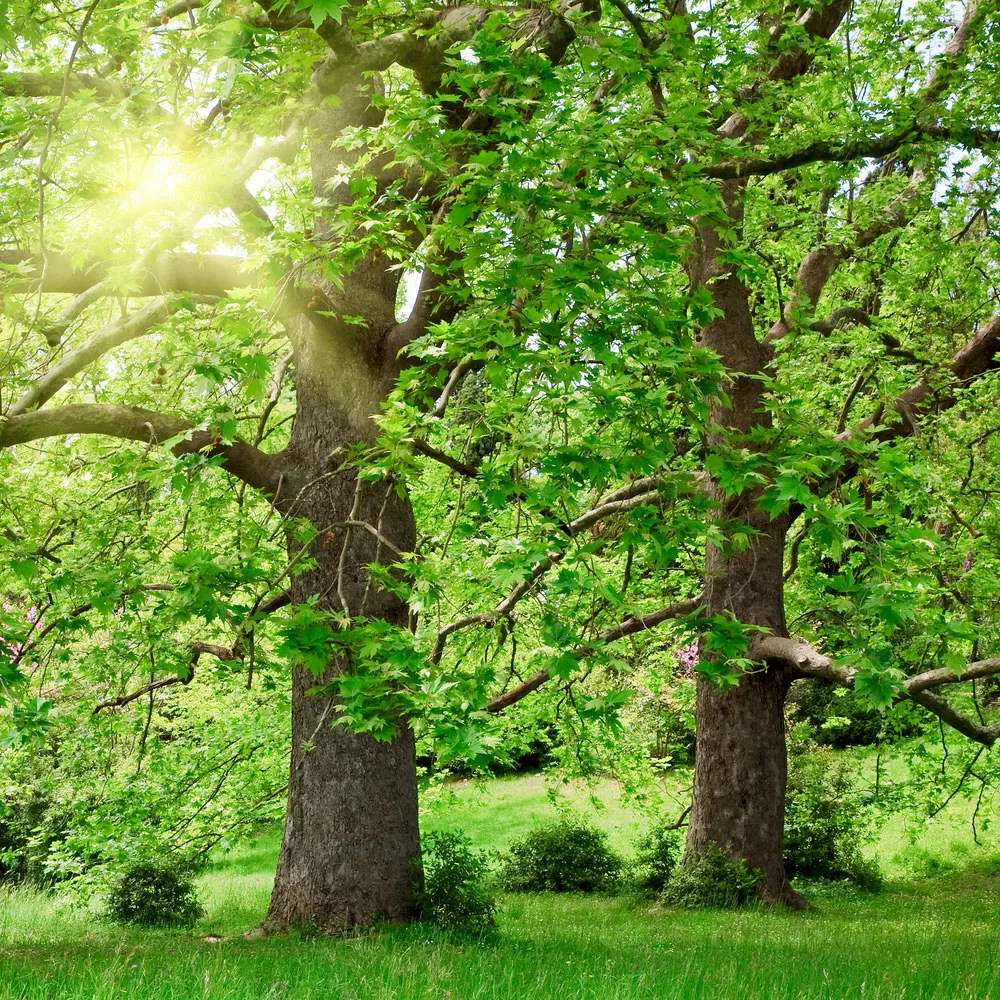
Sycamore Trees.
Are you planning to use sycamore as firewood? If so, here are some of its unique burn qualities you should know.
Heat Yield
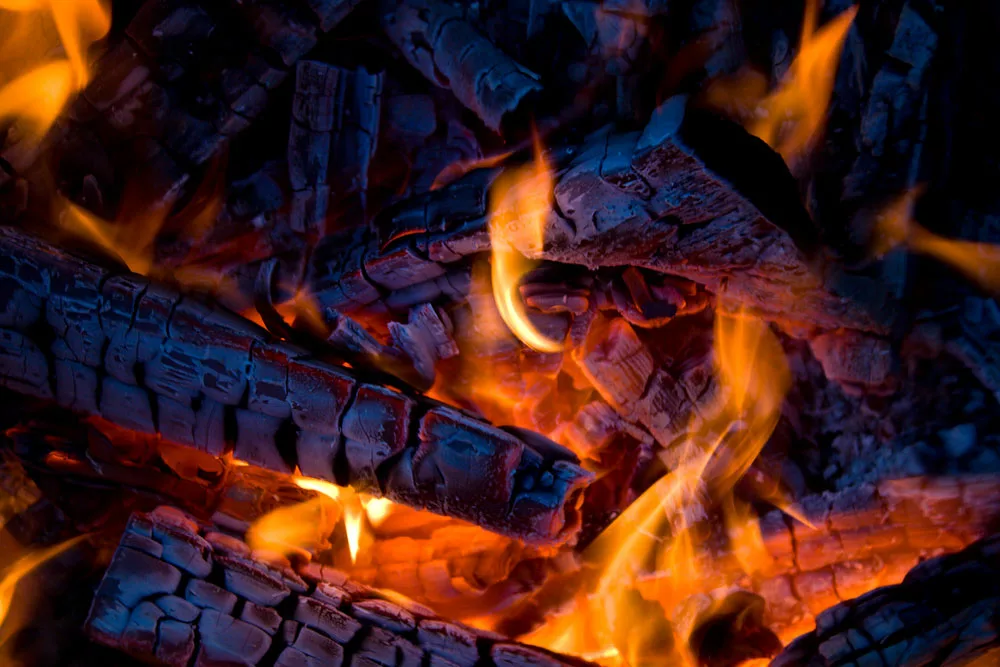
Firewood in a fire.
Sycamore firewood produces moderate heat of 20 million BTU/ cord.
Comparatively, the heat output is about 25% lower than ash, oak, and other top-class firewood.
Hence, if you plan to use sycamore tree firewood as your principal option, beware of its relatively moderate heat output.
Smoke Production
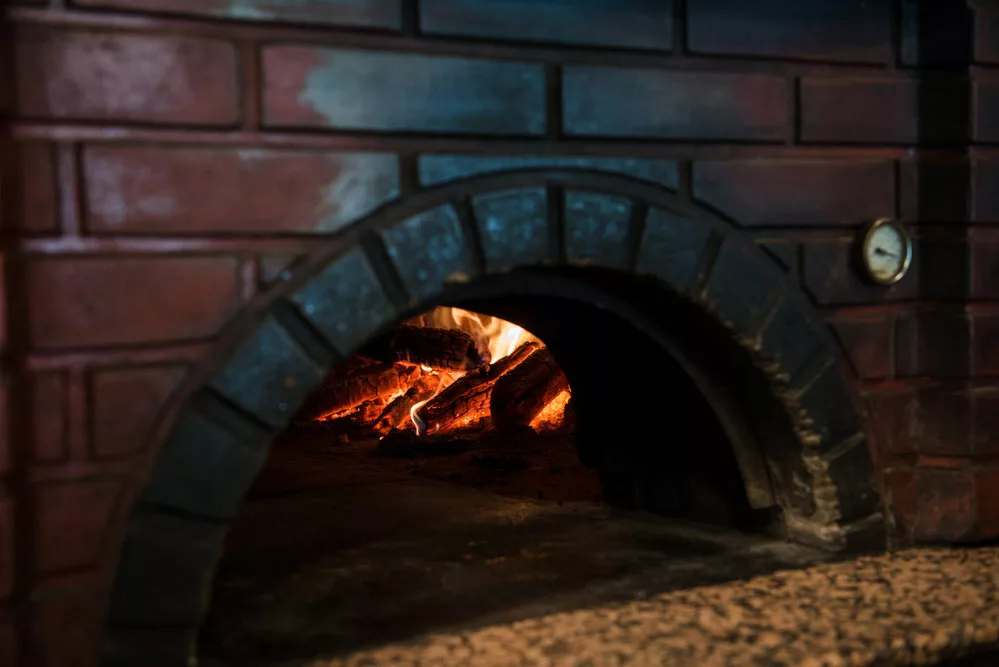
A brick oven with fire.
Sycamore firewood has a relatively high moisture content, especially if you don’t dry it well. But generally, sycamore firewood burns with moderate smoke.
If you adequately season the firewood, its smoke production shouldn’t be challenging.
But, the firewood takes quite a long time to dry completely.
Thus, you must be patient to ensure your sycamore is good for firewood.
Seasoning Time
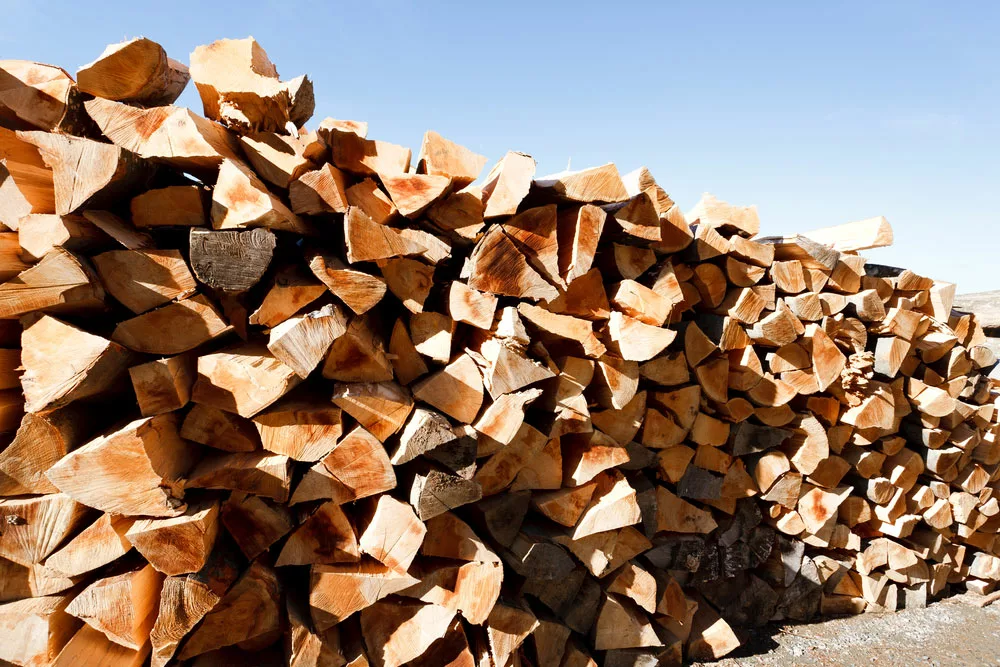
A stack of firewood.
You’re highly likely to find Sycamore trees near water sources.
Hence, sycamore firewood often contains a relatively higher moisture content than other hardwoods.
Consequently, it has a longer seasoning period than other firewood.
Ideally, you can get the moisture content of your sycamore to less than 20% by drying it for 12 to 24 months.
The long dry period is because Sycamore firewood has a high density.
Also, ensure your sycamore firewood is efficiently dry to obtain minimal smoke.
Lastly, when using it indoors, never burn the firewood when green.
Burning Smell
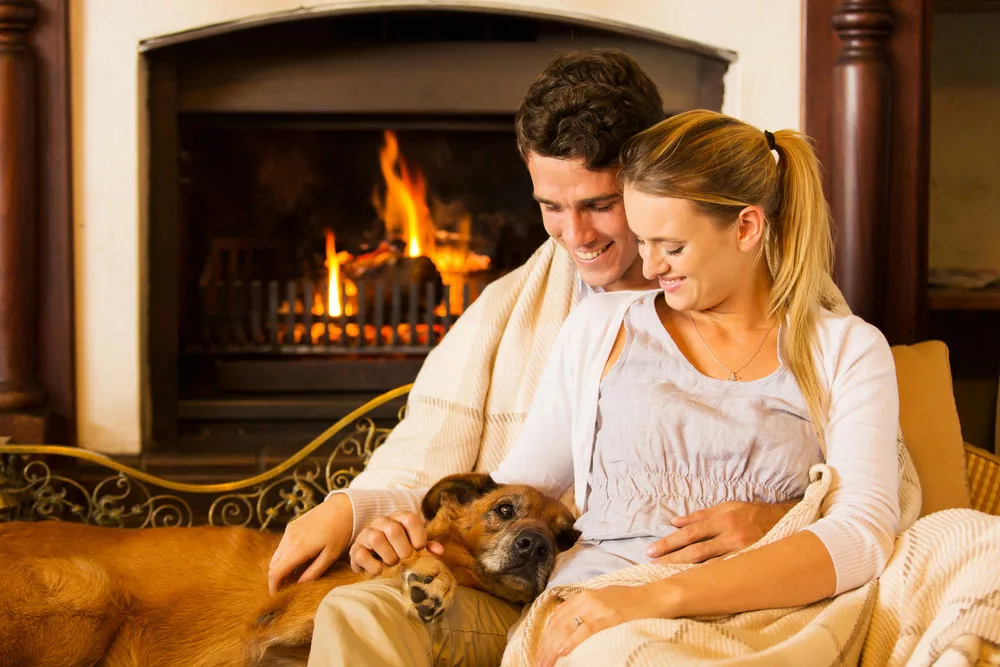
Beautiful young couple sitting by the fireplace with their pet dog.
Sycamore tree firewood burns with neither a bad nor a strong aroma, as with cherry and hickory.
Therefore, it is ideal for users sensitive to strong odors.
Creosote Buildup
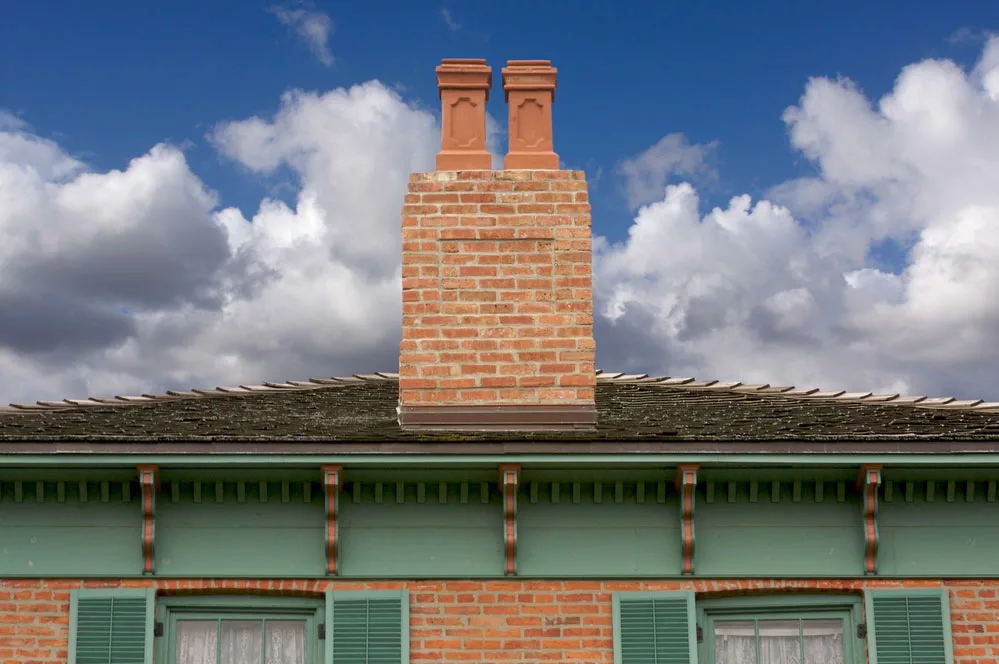
A classic home chimney.
You’re most likely to experience creosote if you use partially seasoned softwood with high contents of moisture, sap, and oils.
Thus, pine and cedar trees are more likely to cause creosote accumulation than Sycamore.
Also, sycamore firewood may still contribute to significant creosote buildup, especially if you don’t dry it thoroughly.
So, as a rule of thumb, always ensure that your firewood has less than 20% moisture.
Splitting

A Woodcutter splitting logs.
Sycamore has a significant amount of moisture when green.
Thus, you might find the firewood tough to split. Besides, the wood has stringy fibers that make splitting harder.
However, splitting sycamore trees with a powered log splitter for firewood shouldn’t be challenging.
Coals
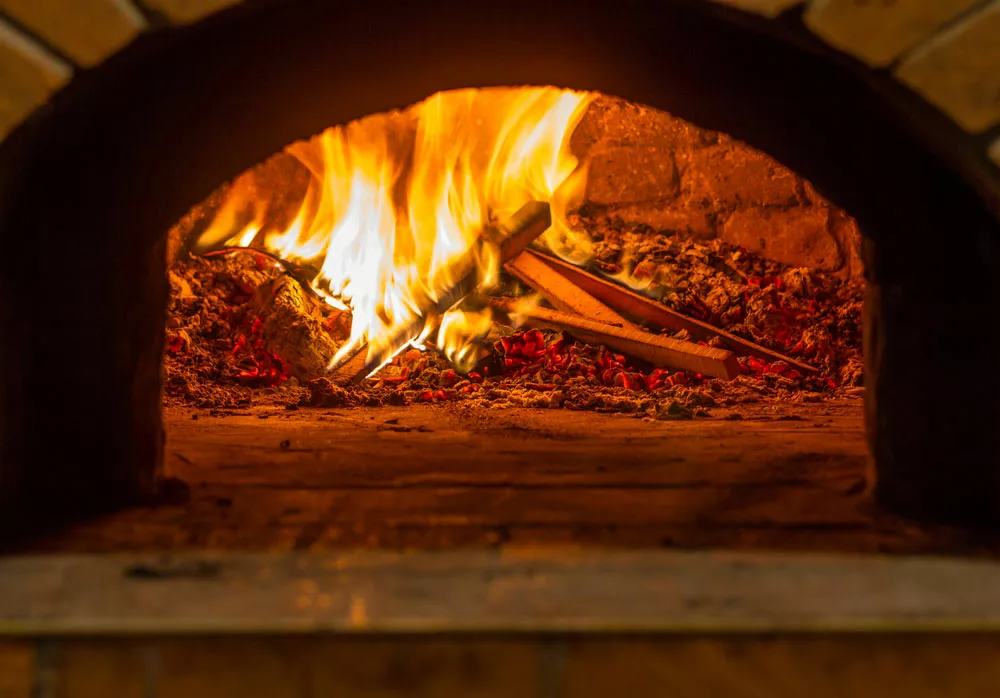
Coals in a Pizza Oven.
Fortunately, sycamore firewood produces good coals but not as great as cherry and elm firewood.
However, it is perfect for cooking. But, since the tree is hardwood, it may be challenging to light it initially.
Hence, it would be best to have a great kindler, such as pine to start the fire before adding sycamore firewood.
Different Types of Sycamore Firewood
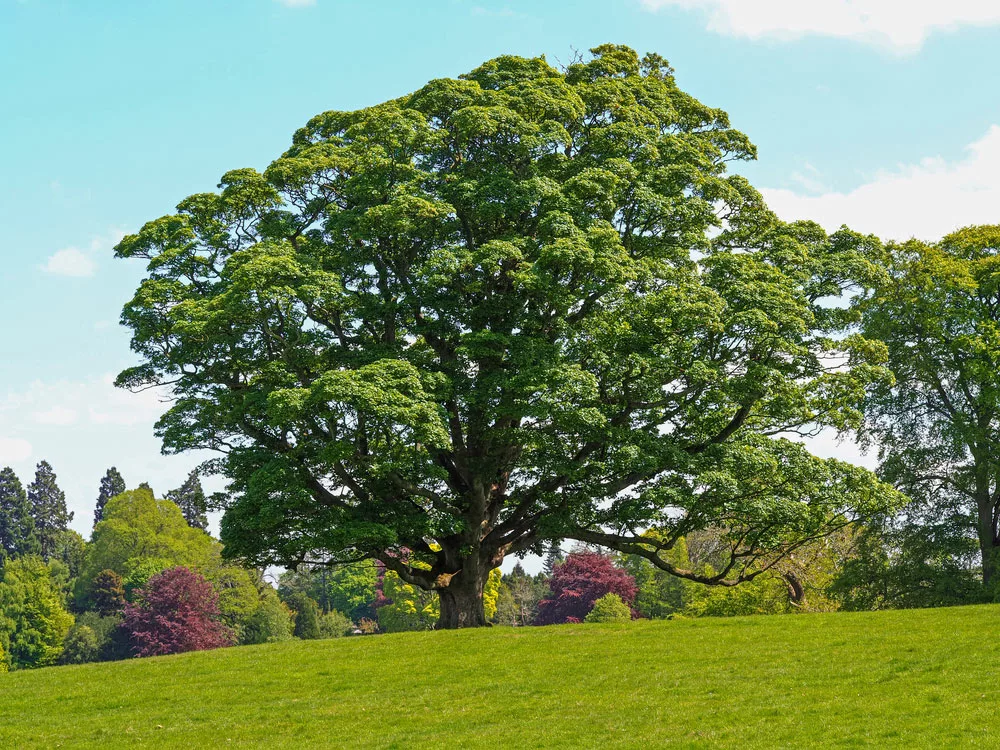
A sycamore tree with summer foliage.
This section will discuss the three most popular sycamore tree species:
American Sycamore
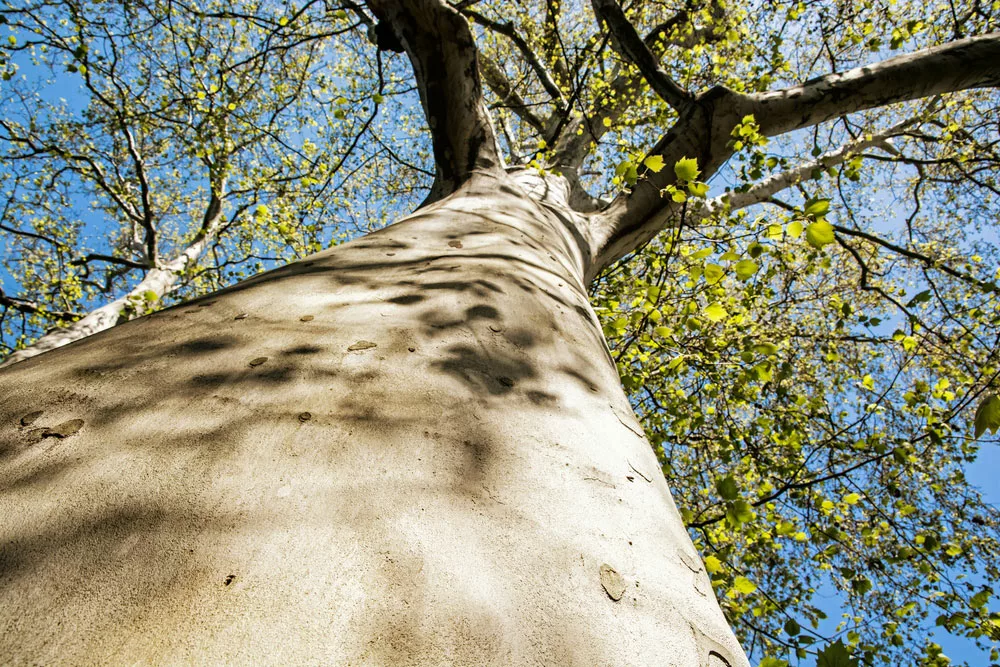
A Massive American Sycamore Tree.
The American sycamore tree (western plane/ buttonwood tree) is native to the eastern U.S.
It typically grows near rivers and can rise to a height of between 100 and 130 feet.
They produce 19.1 million BTU/cord and make excellent shade trees in urban areas.
Californian Sycamore
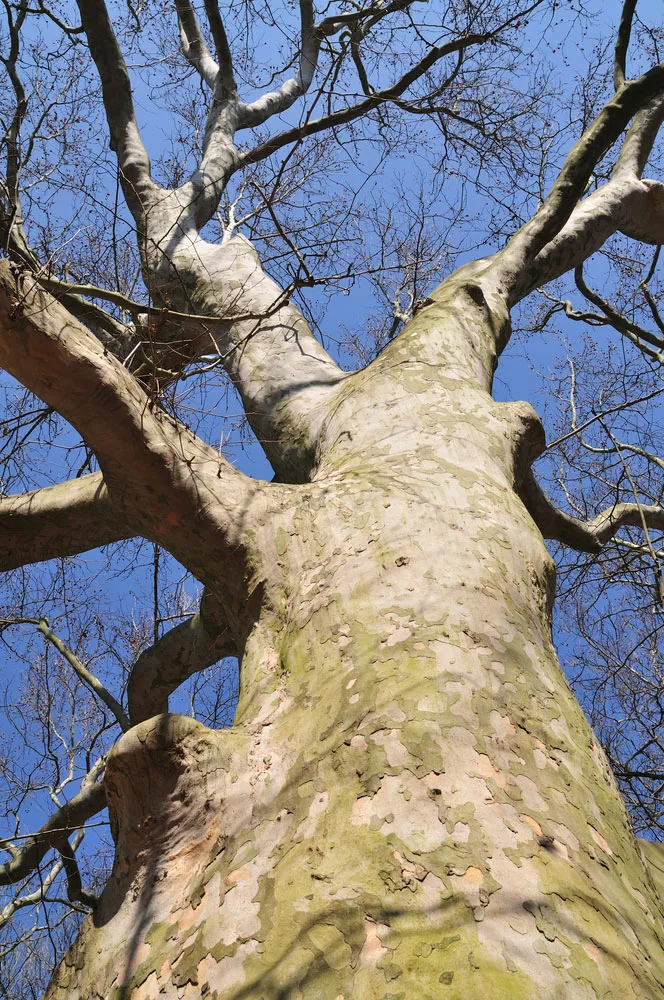
A big sycamore tree.
Californian plane trees or Western sycamore grow along the west coast of the U.S.
They attain a height of between 80 to 110 feet at full maturity.
They are also drought resistant and produce 19.5 million BTU/cord.
Mexican Sycamore
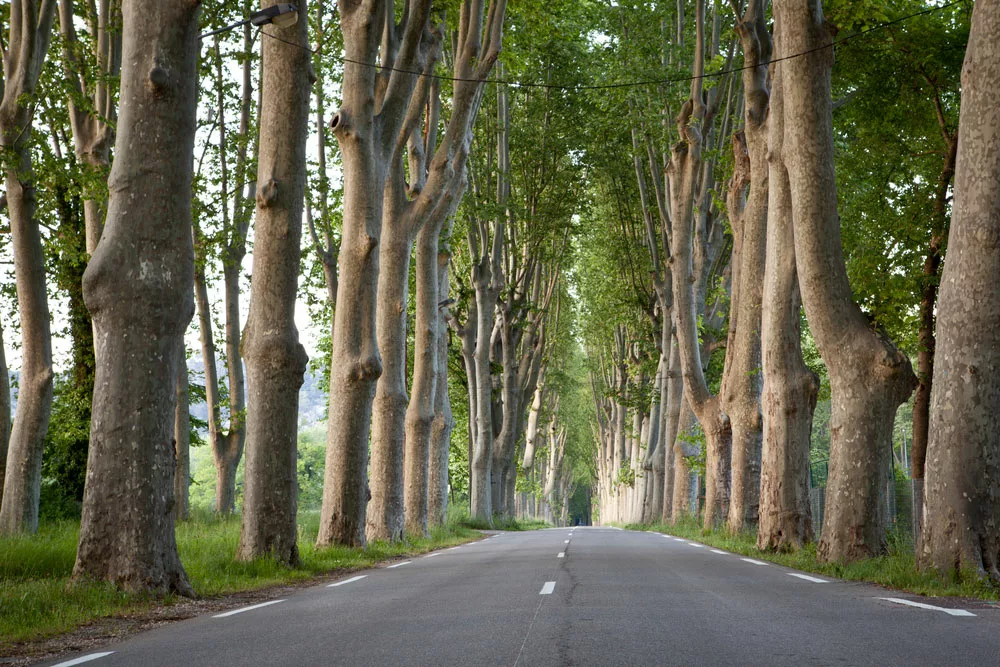
Lovely country road with sycamore trees in Provence, southern France.
Despite being smaller than the American sycamores (40 to 50 feet), the Mexican type grows faster.
It is common in most parts of the Western U.S. and burns 19.1 million BTU/ cord.
How To Identify Sycamore Firewood
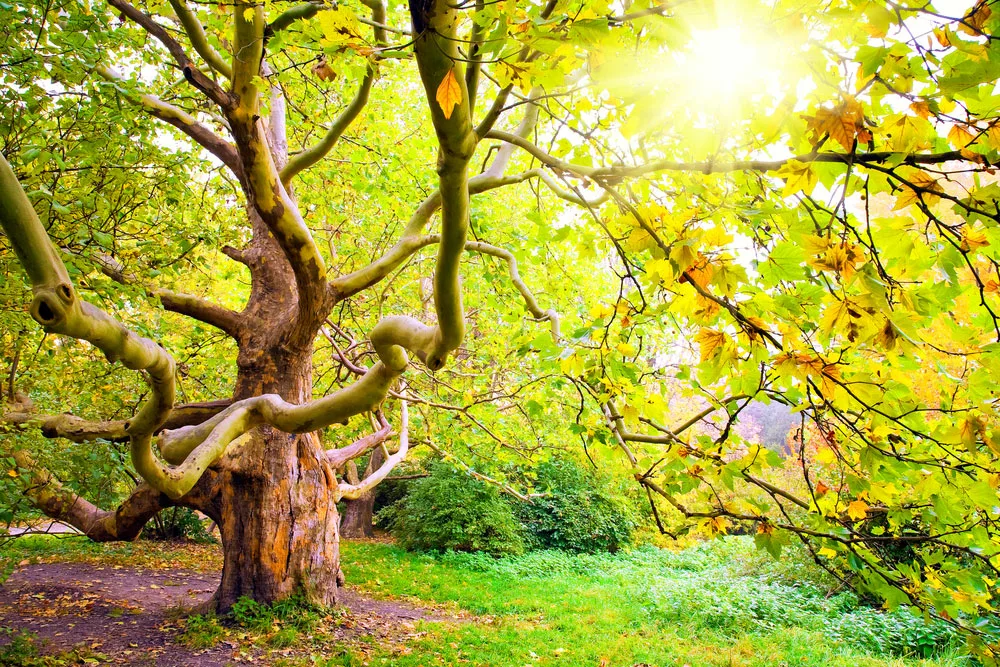
Autumn Tree Sycamore.
Sycamore tree firewoods have some distinctive features, making them easier to identify from other wood types.
For instance, looking at a sycamore log, you can quickly identify the unique bark patterns.
Bark
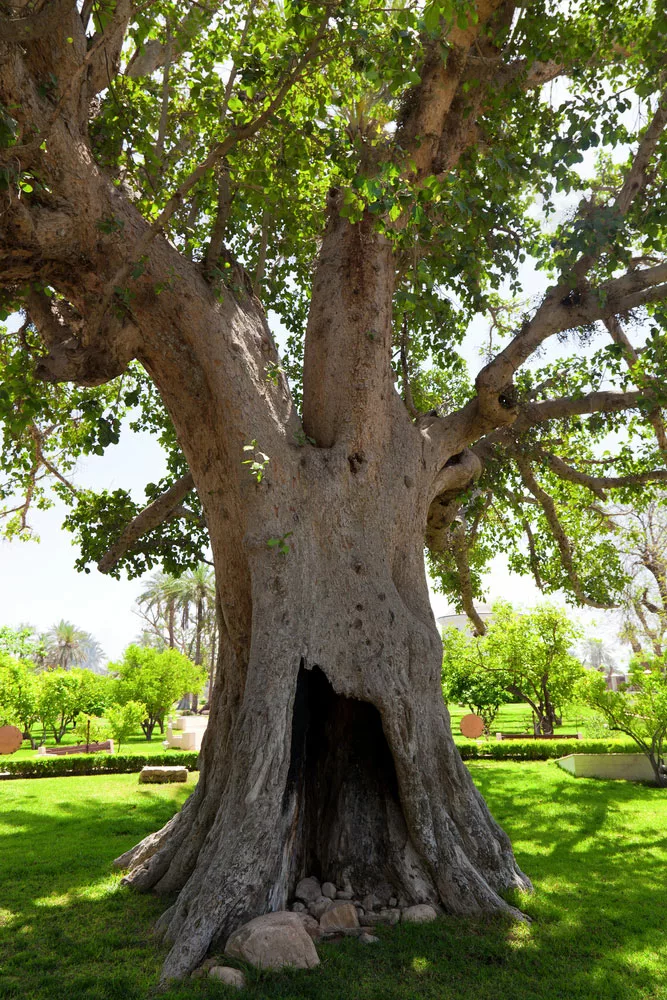
An ancient Sycamore tree in Jericho, Israel.
Sycamore wood has a light, flaky bark with a whitish-green layer, making the tree almost seem naked.
The unique feature is one of the easiest ways of identifying sycamore firewood.
Tree Grains
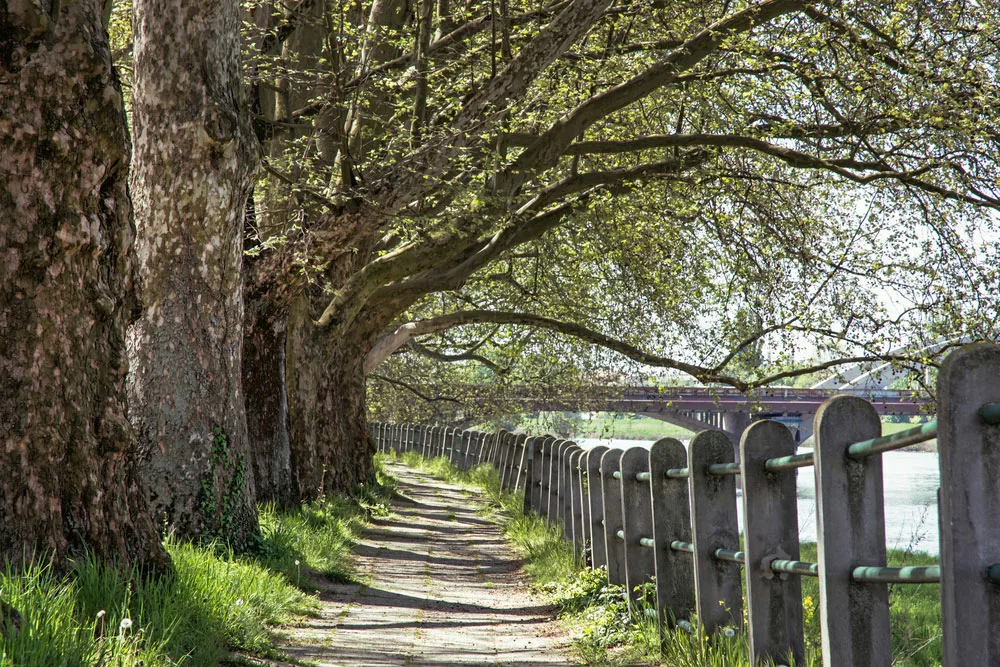
An alley of sycamore trees and retro railing.
Also, check out the ‘rays’ on the end of the tree grain. These rays run at a right angle to the annual rings.
Thus, they help count the age of the tree.
However, this technique may make deciphering between sycamore and oak hard.
The sycamore rays are smaller and closely knit.
However, in oak trunks, the lines are more prominent and spread out.
Sycamore Firewood Comparison To Other Woods
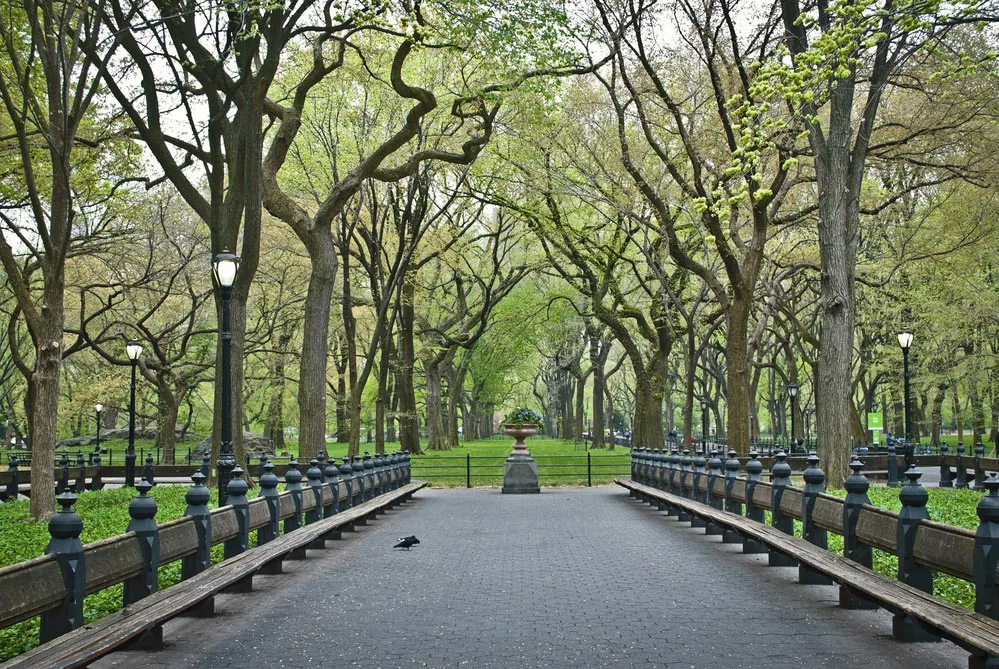
Spring Sycamore Trees.
Unlike maple and oak, we can not classify Sycamore as a top-tier firewood.
However, it remains good firewood in comparison with other woods as follows:
| Firewood Tree | Heat Yield (BTUs per Cord) | Ease of Splitting | Coal Quality | Overall Quality |
| Poplar | 14 | Easy | Poor | Moderate |
| Sycamore | 20 | Difficult | Good | Good |
| Green Ash | 20 | Easy | Good | Exemplary |
| Maple | 25 | Easy | Exemplary | Exemplary |
| Mulberry | 25.8 | Easy | Exemplary | Exemplary |
| Bur Oak | 26 | Easy | Good | Exemplary |
Conclusion
As you have seen, Sycamore is not among the top-ranking firewood trees.
However, it remains among the good firewood trees with moderate heat output and excellent coals.
For more on Sycamore Firewoods, talk to us at any time.
